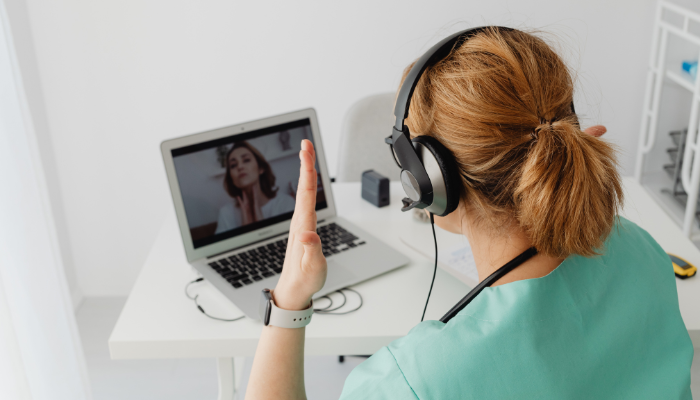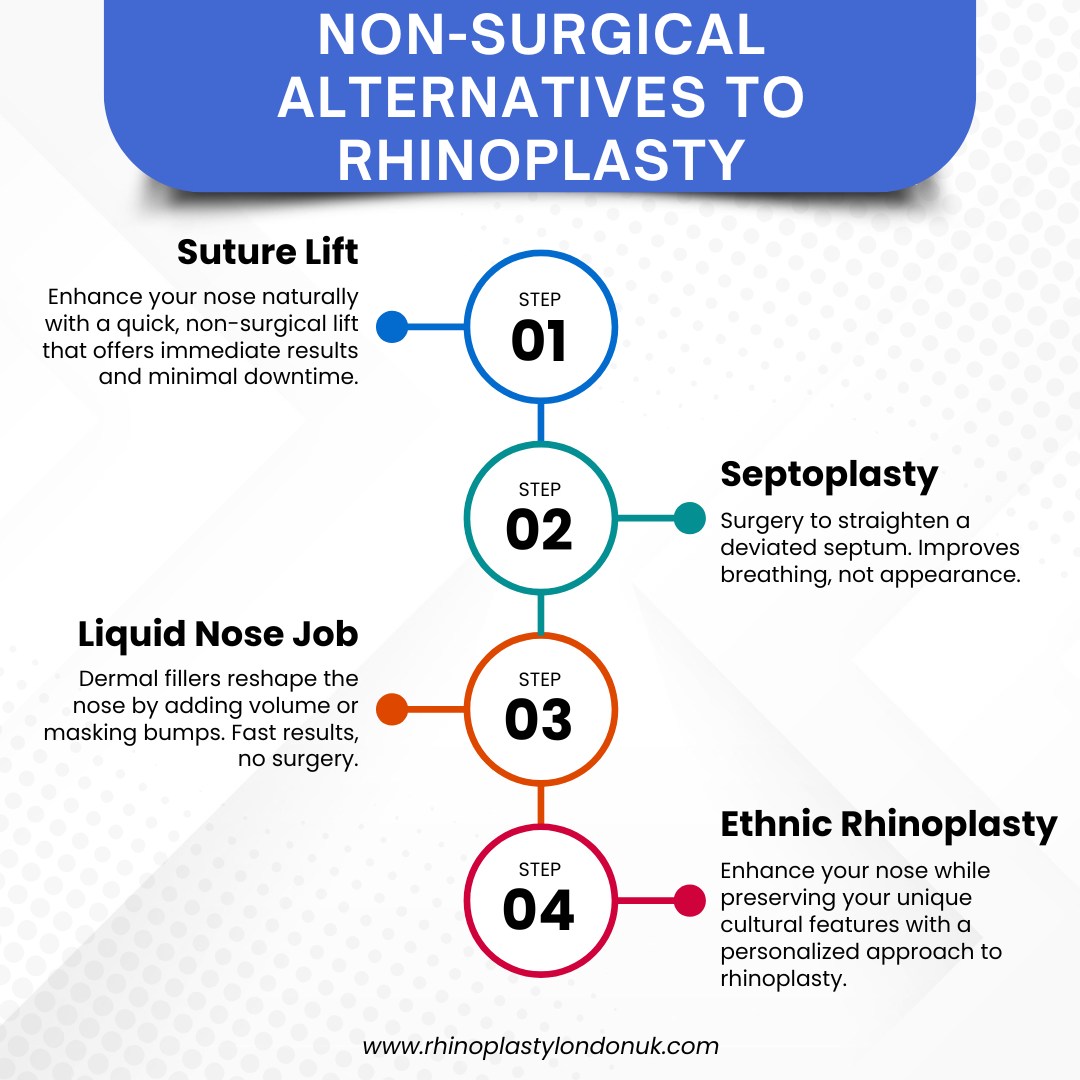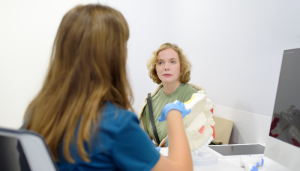When considering a rhinoplasty, or nose job, it’s essential to understand what happens during the consultation. This initial meeting is crucial for both the patient and the surgeon, as it lays the foundation for the surgical journey ahead.
During the consultation, various aspects will be discussed, including your goals, medical history, and any concerns you may have. This article will guide you through the key points of a rhinoplasty consultation, helping you prepare for what to expect.
Key Takeaways
- A rhinoplasty consultation involves discussing your goals and expectations for the surgery.
- Your medical history will be reviewed to ensure you are a suitable candidate for the procedure.
- The surgeon will conduct a physical examination of your nose and face.
- Digital imaging may be used to visualise potential outcomes and facilitate communication.
- Understanding the risks and recovery process is an important part of the consultation.
Understanding The Rhinoplasty Consultation Process

The consultation is a big first step. It’s where you and your surgeon get on the same page. It’s more than just a chat; it’s about planning, assessing your needs, and making sure everyone’s expectations are realistic. This is the moment to explore your options, discuss your goals, and get clear on what’s achievable.
That’s why it’s so important to have an experienced surgeon by your side—someone who not only understands the technical aspects but also listens closely, offers honest advice, and tailors the approach to suit your features and expectations.
Let’s break down what usually happens during this key step:
Initial Discussion of Goals
Your surgeon will want to know exactly what you’re hoping to achieve. This is your chance to be clear about what you don’t like about your nose and what you’d like to change.
Don’t hold back! Whether it’s a bump you want smoothed out or a tip you want refined, the more detail you give, the better. They’ll also want to know if you’re having any breathing problems, as this can be addressed during the surgery too.
Medical History Review
Next up, expect a thorough grilling about your medical history. They’ll ask about any conditions you have, medications you’re on, and previous surgeries. This isn’t just small talk; it’s vital for ensuring your safety during and after the procedure.
Be honest about everything, even if it seems irrelevant. Things like allergies or bleeding disorders can have a big impact.
Physical Examination
Then comes the physical examination. Your surgeon will take a good look at your nose, both inside and out. They’ll assess the structure of your nose, the thickness of your skin, and how it fits with the rest of your face. They might also take some measurements and photos.
This helps them to understand the anatomy of your nose and plan the surgery accordingly. It’s all about getting a clear picture of what they’re working with.
The consultation is a two-way street. It’s not just about the surgeon telling you what they can do; it’s about you understanding the process, the risks, and the potential outcomes. Don’t be afraid to ask questions and voice any concerns you have. It’s your face, after all!
Addressing Patient Concerns and Expectations
You and your surgeon must be all on the same page before moving forward with any kind of surgery. This part of the consultation is all about making sure your questions are answered and that we have a good understanding of what you’re hoping to achieve.
Discussing Surgical Goals
You’ll have a proper chat about what you specifically want to change about your nose. Is it the size, the shape, a bump on the bridge, or something else entirely? Being clear about your goals is the first step towards a successful outcome.
It will help the surgeon understand your vision and allow them to explain what’s realistically possible with rhinoplasty.
Exploring Aesthetic Desires
Beyond the technical stuff, you will explore the aesthetic side of things.
- What kind of look are you going for?
- Do you want a more refined appearance, or are you aiming for something more subtle?
It’s helpful to bring in pictures of noses you like (and, just as importantly, noses you don’t like). This gives the surgeon a visual reference point and helps to understand your personal taste. Remember, everyone’s face is different, so they need to tailor the surgery to suit your unique features.
Understanding Functional Needs
Rhinoplasty isn’t just about looks; it can also improve how well your nose works. If you have trouble breathing through your nose, or if you’ve had a previous injury that’s affecting your nasal passages, you’ll need to address these functional needs as well.
Sometimes, improving the function of your nose can also have a positive impact on its appearance, and vice versa. It’s all about finding the right balance.
Evaluating Candidacy for Rhinoplasty
Before you get ahead of ourselves, it’s really important to figure out if it’s the right choice for you. Not everyone is an ideal candidate, and that’s perfectly okay. It’s all about making sure you’re safe, happy, and get the best possible outcome.
Let’s walk through what we look at to see if rhinoplasty is a good fit.
Assessing Health and Medical History
First things first, what is your overall health? This isn’t just a formality; it’s about making sure you’re healthy enough to undergo surgery and heal properly afterwards. Expect to talk about:
- Any pre-existing conditions
- Previous surgeries
- Any medications you’re currently taking
Certain conditions, like bleeding disorders or uncontrolled diabetes, might make rhinoplasty riskier. It’s all about being upfront and honest so you can choose the safest decision together.
Identifying Realistic Expectations
Having realistic expectations is probably the most important thing when it comes to being a good candidate for rhinoplasty. Rhinoplasty can do amazing things, but it’s not magic. It’s important to understand what the surgery can and can’t achieve.
You will talk about your goals, look at before-and-after photos, and use digital imaging to give you a realistic idea of what’s possible. It’s about finding a balance between what you want and what’s achievable, given your individual anatomy and skin type. If your expectations are way out of line with reality, you might need to reconsider whether rhinoplasty is the right path for you right now.
Determining Anatomical Suitability
The surgeon will now take a good look at your nose. This involves a thorough physical exam, both inside and out. They will assess the structure of your nose, the thickness of your skin, and the strength of your cartilage.
All these things can affect the outcome of the surgery. For example, someone with very thick skin might not see as much definition after rhinoplasty as someone with thinner skin.
Exploring Surgical Options During Consultation

During your rhinoplasty consultation, it’s time to explore the various surgical options available. It’s not just about getting a nose job; it’s about understanding the possibilities and choosing the best path for you. Let’s have a look at what this involves.
Types of Rhinoplasty Procedures
There are several types of rhinoplasty, each designed to address specific needs. These include:
- Open Rhinoplasty: This involves a small incision across the columella (the strip of skin between your nostrils) to allow the surgeon greater access to reshape the nose.
- Closed Rhinoplasty: Incisions are made inside the nostrils, meaning no visible external scars. It’s suitable for less complex alterations.
- Tip Plasty: Focuses solely on reshaping the nasal tip.
- Septoplasty: Corrects a deviated septum to improve breathing; often combined with rhinoplasty.
- Suture Lifts: A minimally invasive technique that uses dissolvable sutures to subtly lift and reshape the nose. It’s ideal for minor adjustments and offers faster recovery compared to surgical methods.
Techniques and Technologies
Rhinoplasty techniques have advanced quite a bit. Surgeons now use a range of tools and methods to achieve the best results. Some common ones include:
- Cartilage Grafting: Using cartilage from elsewhere in your body (ear or rib) to rebuild or reshape the nose.
- Suturing Techniques: Precise suturing to refine the nasal tip or nostrils.
- Piezoelectric Instruments: These use ultrasonic energy to reshape bone with greater precision and less trauma.
Expected Outcomes and Limitations
It’s really important to have a clear idea of what rhinoplasty can achieve, and what it can’t. While rhinoplasty can significantly improve the appearance and function of your nose, it’s not a magic wand. Here are some things to keep in mind:
- Realistic expectations are key. Discuss what’s achievable with your surgeon.
- Results can be affected by skin thickness, cartilage strength, and healing ability.
- Revision surgery might be needed in some cases to fine-tune the results.
It’s important to remember that every nose is unique, and what works for one person might not work for another. Your surgeon will tailor the procedure to your specific anatomy and goals, ensuring the best possible outcome.
Discussing Risks and Complications
It’s really important to have a frank chat about the potential downsides of any surgery, and rhinoplasty is no different. The surgeon would want you to be fully informed and comfortable with your decision.
General Surgical Risks
Like any operation, rhinoplasty comes with some standard risks. These aren’t specific to nose jobs, but they’re worth knowing about:
- Infection: We take every precaution to keep things sterile, but there’s always a small risk of infection. This is usually treatable with antibiotics.
- Bleeding: Some bleeding is normal after surgery, but excessive bleeding is rare. We’ll give you instructions on how to minimise this.
- Reactions to Anaesthesia: Allergic reactions are rare, but we’ll monitor you closely during and after the procedure.
Specific Risks Associated with Rhinoplasty
Rhinoplasty has its own set of potential complications. It’s not all that common, but it’s important to be aware of them:
- Breathing Difficulties: Sometimes, the surgery can affect your nasal passages, leading to difficulty breathing through your nose. This is usually temporary, but can be permanent in rare cases.
- Numbness: It’s common to experience some numbness in and around your nose after surgery. This usually resolves over time, but can sometimes be permanent.
- Asymmetry: Achieving perfect symmetry is tricky, and there’s a chance your nose might not be perfectly even after surgery. This is often minor, but can be corrected with further surgery if needed.
- Need for Revision Surgery: Sometimes, the initial surgery doesn’t achieve the desired result, and a second operation is needed. This isn’t necessarily a sign of a mistake, but rather a reflexion of the complexity of the procedure and individual healing differences.
It’s worth remembering that everyone heals differently, and there’s no guarantee of a perfect outcome. We’ll do our best to manage expectations and achieve the best possible result for you.
The Role of Digital Imaging in Consultations
Visualising Potential Outcomes
Basically, they use computer wizardry to show you what your nose could look like after surgery. It’s not a guarantee, of course, but it gives you a much better idea than just trying to imagine it. Think of it as a sneak peek into the future.
Facilitating Patient-Surgeon Communication
Ever tried describing something really specific, like the exact curve you want on your nose? It’s tough! Digital imaging helps us get on the same page. You can point to the image and say, “More like this,” and I instantly know what you mean. It cuts down on misunderstandings and makes sure you and your surgeon are both aiming for the same goal.
Preparing for Your Rhinoplasty Surgery
Now, it’s time to get ready for the big day and ensure a smooth recovery. Here’s what you need to know:
Preoperative Instructions
Your surgeon will give you a detailed list of things to do (and not do) before your surgery. Follow these instructions to the letter. This might include:
- Avoiding certain medications, like aspirin or ibuprofen, which can increase bleeding. I know, it’s a pain if you get headaches, but it’s really important.
- Stopping smoking or vaping well in advance. Seriously, this is non-negotiable. Smoking messes with healing.
- Arranging for someone to drive you home after the surgery and stay with you for the first night or two. You won’t be in tip-top shape, trust me.
It’s also a good idea to prepare your home. Think comfy clothes, plenty of pillows to prop yourself up, and easy-to-prepare meals. You won’t feel like cooking!
Postoperative Care Overview
Okay, so you’ve had the surgery. Now what? Here’s a sneak peek at what to expect:
- Expect some swelling and bruising. It’s normal, and it will subside over time. Ice packs are your best friend.
- You’ll probably have a splint or cast on your nose. Resist the urge to poke or prod it. Leave it alone!
- Pain medication will help manage any discomfort. Take it as prescribed.
- Avoid strenuous activities for a few weeks. No gym, no heavy lifting, no running a marathon. Just chill.
Scheduling Follow-Up Appointments
Follow-up appointments are super important. Your surgeon needs to check on your progress and make sure everything is healing as it should. Don’t skip these! They’ll likely be scheduled at regular intervals in the weeks and months following your rhinoplasty.
Conclusion
A rhinoplasty consultation is a vital step in your journey towards achieving your desired nose shape and function. It’s your opportunity to express your concerns and expectations while also gaining professional insight into the most suitable approach for your unique features.
Remember, this is a collaborative process between you and your surgeon. Don’t hesitate to ask questions or share any worries you may have—open communication is key. The more informed you are, the better prepared you’ll be for the procedure and recovery.
Many clinics offer a FREE initial consultation at no cost—giving you the freedom to explore your options and understand the process without commitment. Ultimately, this conversation is about finding the right path forward, ensuring you feel confident and comfortable every step of the way.
Frequently Asked Questions
What can I expect during my rhinoplasty consultation?
During the consultation, you’ll talk about your goals for surgery, your medical history, and any concerns you have. The surgeon will examine your nose and face, and may take photos for planning.
How long does a rhinoplasty consultation usually last?
Typically, a rhinoplasty consultation lasts about 30 minutes, but it can vary depending on your needs and questions.
What should I bring to my rhinoplasty consultation?
It’s helpful to bring a list of questions, any medical records related to your nose or breathing, and a list of medications you take.
Will I need any tests before the surgery?
Yes, your surgeon may recommend some tests like blood tests or imaging to ensure you’re fit for surgery.
How do I know if I am a good candidate for rhinoplasty?
A good candidate is someone in good health with realistic expectations about the surgery’s results. Your surgeon will assess your nasal structure and overall health.
What are the risks associated with rhinoplasty?
Like any surgery, rhinoplasty has risks such as bleeding, infection, and complications like breathing problems or uneven results. Your surgeon will discuss these with you.





